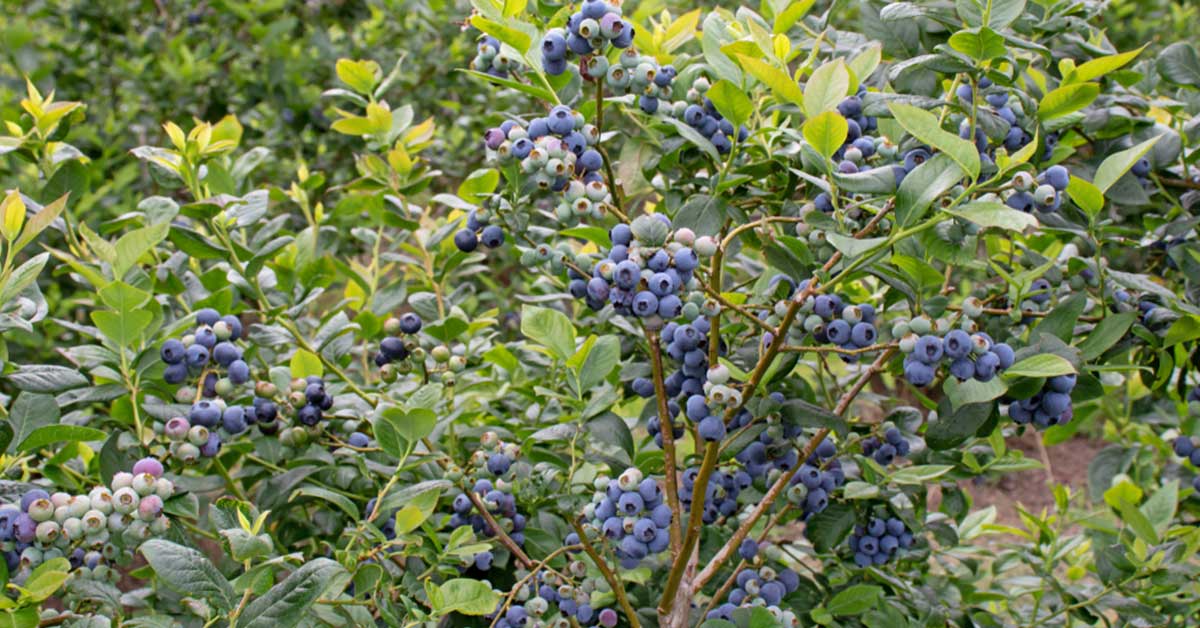Little globes of sweetness explode with flavor as you shovel them by the handful into your mouth. Blueberries are undeniably delicious, whether they are raw or cooked in a heart-warming pie, they’re irresistible. I challenge anyone to turn down a humble blueberry! And what’s even better is these happy-looking berries are good for us as well! So you are going to want to follow our guide on how to grow blueberries of your own at home!
How to Grow Blueberries
Growing organic blueberries is a lot easier than people think. While most varieties take 3 years from seeds to producing fruit (so if you were hoping to use them in a blueberry pie for next week’s family get together, you might want to call Aunt Sue and take a rain check), you can talk to your local gardening depot or nursery about buying a baby plant instead. Whatever you decide, use these expert tips to get your own organic blueberries in no time!
Read More: How To Grow Plums From A Seed
Find the Perfect Spot
Much like other plants, blueberry bushes enjoy quite a lot of sunlight and good soil. The sunlight will allow your blueberry bush to carry out photosynthesis, which is essential for plant growth! The correct soil will also encourage photosynthesis and growth.
If you live in a home with a garden, then raised beds are a great idea! This will allow water to run throughout the soil, allowing a perfect amount of moisture for the bush to grow. If you live in an apartment, don’t worry! You can still effectively grow blueberries; you just need to purchase a patio container. You can also try the dwarf blueberry plant, which will only grow about 2 feet high (instead of up to 8 feet!). Look for Dwarf Tophat Blueberry seedlings at your local greenhouse or gardening store.
Give them Room

One bush will require up to 6 feet of space, so don’t push it into a cramped corner! Allow it to grow and expand naturally. If you plan on growing more than one, you’re going to want to leave around 2.5-3 feet between each one. (For the dwarf tophat blueberry bush, you only need to make sure it has enough room to grow up to 2 feet tall and 2 feet wide).
The Planting Process
Depending on where you live in the world will control when you should plant your blueberry bush. In most countries, spring is the optimal time to plant your bush as it will be ready to harvest come July or August!
If you are using a baby blueberry plant to get you going, then you are going to want to take it out of its bought packaging. Give the roots a little ruffle with your hands then place into prepared soil. You can then add more and more soil around the roots until it can stand up on its own.
Make sure to pat down the top layer of soil and then give your plant a good water. Always keep it hydrated!
Mulching
The best form of mulch for blueberry bushes is sawdust but pine bark, rind mulch, and grass clipping will all do just fine. Apply 2-4 inches onto the soil.
Pruning blueberries
Once your bush starts growing, you are going to want to start pruning it. Research has shown that pruning allows ‘the strongest branches to grow the most vigorously, wherever they may be on the plant‘. This allows for maximal fruit growth.
Just use a pair of small clippers or strong scissors and cut back some of the branches to encourage more berries to grow! Chop away any dead branches and remove any around the bottom of the bush.
Fertilization
This is one of the most important stages of growing your blueberry bush. You should always use organic fertilizers as the chemicals found in inorganic ones may damage your plant! They’re non-toxic, better for the environment, and ensure your plant will remain fertilized for an extended period.
Try using Bloodmeal or Cottonseed to boost your plant’s growth, naturally.
Blueberry bushes take up to 3 years to mature and give you your amazing blueberry harvest. Keep that in mind when you’re choosing whether to plant from a seed or from a baby plant.
Keep Reading: How To Grow Pineberries, The Strawberry That Tastes Like Pineapple













